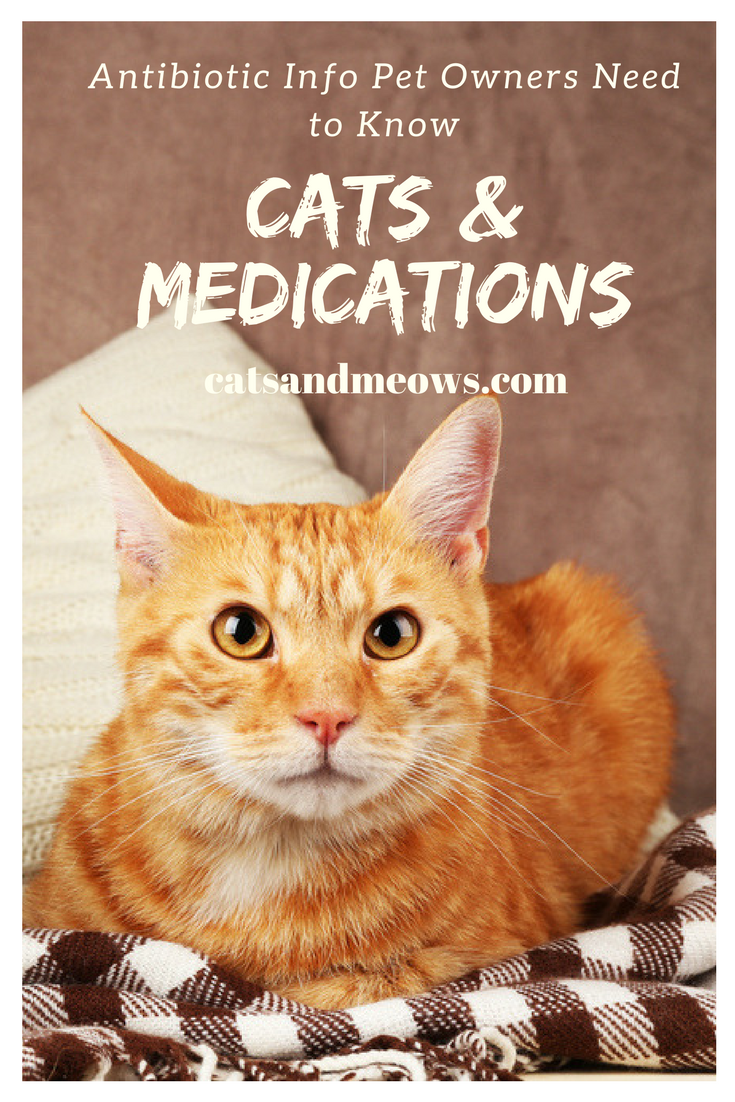Cats and Medications – Antibiotic Info Pet Owners Need to Know
 Pet health can seem intimidating, but cats and medications don’t have to be complicated. Here is some antibiotic info pet owners need to know. Taking care of your furry friends can be easily done and stress-free with these tips and advice.
Pet health can seem intimidating, but cats and medications don’t have to be complicated. Here is some antibiotic info pet owners need to know. Taking care of your furry friends can be easily done and stress-free with these tips and advice.
Amoxicillin VS. Clavamox
Sound familiar? Amoxicillin is an antibiotic that staves off the growth of bacteria and commonly used for treating ailments like Strep Throat, bronchitis, and urinary tract infections in humans. It’s also feline-friendly, but more new aged vets are using Clavamox, which is an antibiotic with clavulanic acid that packs a double-punch. Think of it this way, penicillin was the original go-to antibiotic, but Amoxicillin became the preferred new kid in town. Now, Clavamox is becoming the preferred choice. Of course, your vet will make the best choice for your cat.
Related: All-Natural Home Remedies for Pets
Timing
With any kind of medications, it’s important to follow the recommended timetable for your cat’s medication. It may not seem like that big of a deal, but timing the dosage of an antibiotic can be key in treatment and ensure the medication doesn’t upset your feline friend’s stomach. Typically, if a dose is missed you should administer it as soon as possible unless it’s close to your cat’s next scheduled dose. In that case, simply take the scheduled dose and go back to the regular schedule – skipping the missed med. It’s important that you err on the side of not over-administering any medication.
Side Effects
You know your cat best, while it’s always best to check with your vet, go with your gut. Ask about typical side effects and when you should be concerned when your cat is prescribed any kind of medication. Typical side effects for antibiotics include rashes, fever, diarrhea, and vomiting. Of course, every cat is different and so is every medication, always ask about warning signs of problems or allergic reactions your furry friend might encounter.
Related: The Best Ways to Give Medicine to your Cat
Giving Your Cat Medications
How you give your cat its medications may also be a concern. Just like with humans, you may need to make sure your cat has an empty stomach or take the meds with food. Your vet should give you clear instructions on this, but some are tempted to put the medication in with food to get your cat to take the pill. Here’s how to give your cat medications without the use of treats and food…
- According to Washington State University’s college of veterinary medicine, it’s best to hold your cat’s head with your left hand so your thumb and fingers rest on each side of your pet’s jaw. Think of it as creating a hat around your cats head allowing their eyes to be visible.
- Then, tilt your cats head back as this typically opens their jaw naturally.
- Place your ring finger on the small incisor teeth while holding the pill or capsule between your index and thumb, cushioned by your middle finger to ensure control over the pill.
- Push the pill over the back of the tongue. Liquid medications should be squirted in the pouch between the teeth and cheek.
- Close the mouth and stroke the cat’s neck or blow sharply on his/her nose to encourage the cat to swallow.
While it may take some trial and error and routine, you and your cat will eventually get the hang of medications. It may seem daunting, but staying calm and being gentle yet purposeful will be key.
Share your thoughts in the Comments section below, on our Facebook Page, Follow Our Twitter Account or Head Over To Our Pinterest Page!
